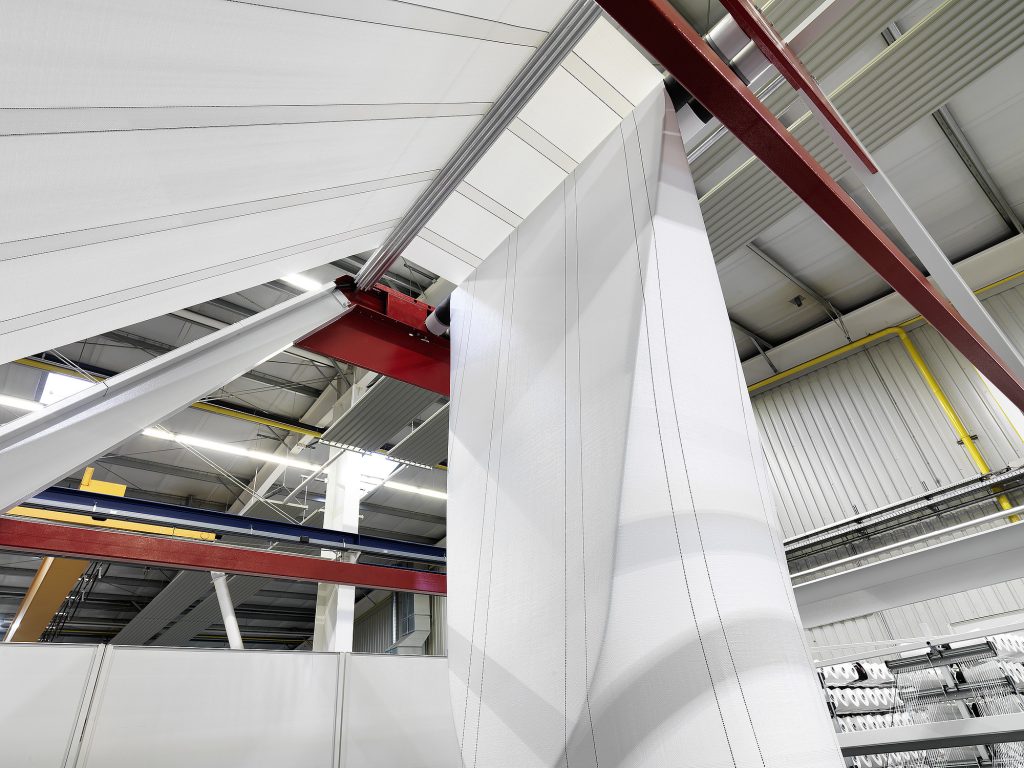
- 1. The Evolution of Leakproof Woven Bags: From Basic Weaves to Fine-Yarn Mastery
- 2. The Science of Fine-Yarn Weaving: Precision Engineering for Leakproof Performance
- 3. VidePak’s Manufacturing Excellence: From Resin to Finished Product
- 4. Industry-Specific Applications: Where Leakproofness Matters Most
- 5. FAQs: Addressing Critical Client Concerns
- 6. Sustainability: The Next Frontier in Leakproof Packaging
- 7. Conclusion
“Why are industries from agriculture to pharmaceuticals increasingly shifting to leakproof woven bags for bulk packaging?” This question underscores a critical challenge in modern logistics. The answer lies in advanced manufacturing techniques like fine-yarn weaving, which enable unparalleled leak resistance, strength, and aesthetic precision—a technological edge VidePak has honed over 30+ years as a global leader in woven solutions. With 526 employees, $80 million in annual revenue, and a production network powered by Austrian Starlinger machinery, VidePak’s leakproof bags are redefining reliability in high-stakes supply chains.
1. The Evolution of Leakproof Woven Bags: From Basic Weaves to Fine-Yarn Mastery
Leakproof woven bags have evolved from rudimentary jute sacks to engineered polypropylene (PP) solutions capable of containing liquids and fine powders. The global market for such bags is projected to grow at 5.8% CAGR through 2030, driven by strict FDA and EU packaging regulations (Smithers, 2023).
VidePak’s breakthrough lies in fine-yarn weaving technology, a process that utilizes ultra-thin, high-tenacity PP filaments (80–120 denier) to create fabrics with:
- Thread density: 14–16 threads/cm² (vs. 8–10 in conventional weaves).
- Tensile strength: 45–50 MPa (ISO 527-3), 30% higher than industry averages.
- Surface smoothness: ≤0.5 µm roughness (per ASTM D7127), preventing particle adhesion.
2. The Science of Fine-Yarn Weaving: Precision Engineering for Leakproof Performance
2.1 Technical Principles of Fine-Yarn Fabrication
Fine-yarn weaving involves:
- Extrusion: Virgin PP resin (MFI 2.5–4.0 g/10 min) is melted and drawn into filaments 20–30% thinner than standard yarns.
- Warp/Weft Alignment: Starlinger circular looms weave filaments at 200–250 rpm with ±0.1 mm precision, achieving uniform 120–200 g/m² fabric density.
- Lamination: BOPP films (15–30 µm) are heat-bonded using extrusion coating, creating a 0.02 mm barrier with <0.05 g/m²/24h water vapor transmission (ASTM E96).
Case Study: A European chemical company reduced product loss by 62% after switching to VidePak’s fine-yarn bags for caustic soda powder transport.
2.2 Advantages of High-Density Weaves
| Parameter | Conventional Bag | VidePak Leakproof Bag |
|---|---|---|
| Particle Retention | >50 µm particles leak | Sealed against 10 µm particles |
| Load Capacity | 25–40 kg | 50–75 kg |
| Print Clarity | 4-color max, blurred edges | 10-color HD, ±0.3 mm registration |
3. VidePak’s Manufacturing Excellence: From Resin to Finished Product
3.1 Material Selection and Quality Control
VidePak enforces a 4-stage material protocol:
- Supplier audits: Partners like Sinopec and BASF must comply with ISO 9001 and FDA 21 CFR §177.1520 for food-grade PP.
- MFI testing: Every resin batch undergoes capillary rheometry (ASTM D1238) to ensure optimal flow for fine-yarn extrusion.
- Tensile validation: Yarns are stress-tested at 50 N/cm² for 24 hours (ISO 13934-1).
3.2 Production Infrastructure
- 100+ circular looms: Produce 8,000–12,000 m² of fabric daily.
- 16 extrusion lines: Apply BOPP/PE coatings with 98% adhesion strength (ASTM D903).
- 30+ printing machines: Achieve Pantone-matched colors with 0.1 mm precision.
4. Industry-Specific Applications: Where Leakproofness Matters Most
4.1 Agricultural Chemicals: Combating Hygroscopic Challenges
VidePak’s 6-layer laminated bags with aluminum foil interlayers reduce moisture absorption in ammonium nitrate to <0.1% (vs. 0.5% in PE-lined bags).
4.2 Pharmaceuticals: ISO Class 8 Cleanroom Compliance
Antistatic fine-yarn bags with <5 CFU/ft³ microbial counts (USP <1116>) are used for API transport in partnership with GMP-certified facilities.
5. FAQs: Addressing Critical Client Concerns
Q1: How is leakproofness tested?
A: VidePak conducts:
- Vacuum testing: -0.8 bar for 30 minutes (ASTM D3078).
- Burst pressure tests: Up to 2.5 kPa (EN 26590-2).
Q2: Can bags withstand acidic contents?
A: Yes. PP fabrics with pH 1–14 resistance, validated per ISO 175:2010.
Q3: Are custom sizes available?
A: Yes. VidePak’s modular design system supports sizes from 10 cm² to 2 m³.
6. Sustainability: The Next Frontier in Leakproof Packaging
VidePak’s R&D initiatives include:
- Recyclable mono-material bags: 95% PP content, compatible with EU’s PPWR recycling streams.
- Bio-based coatings: 30% sugarcane-derived PE layers, reducing carbon footprint by 18% (LCA data: ISO 14040).
7. Conclusion
In an era where a single packaging failure can disrupt global supply chains, VidePak’s leakproof woven bags represent the synthesis of material science and manufacturing rigor. By leveraging fine-yarn technology, CEO Ray Chiang’s team has positioned the company as the partner of choice for Fortune 500 clients—evidenced by their 40% market share in Asia’s chemical packaging sector.
As industries face escalating demands for safety and sustainability, VidePak continues to innovate, proving that even the humblest packaging can be engineered to perfection.